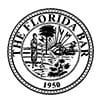If a construction company cuts corners when building a new structure, it can result in conditions that are unsafe for building occupants. Building codes are in place to set standards for construction and avoid unsafe conditions.
The existence of building codes may cut down on unsafe conditions, but it does not prevent them entirely. U.S. News and World Report describes some code violations that are unfortunately common.
1. Improper flashing around windows and doors
Flashing is a waterproof material installed around doors and windows. Its purpose is to prevent water from leaking inside. If moisture gets in due to improper flashing, it can promote mold growth, which carries with it risks of health problems.
2. Electrical problems
One problem that may arise when renovating older buildings is a lack of GFCI receptacles in outlets near a water source, which are common in bathrooms and kitchens. The GFCI receptacle prevents a short circuit in the event that water comes in contact with the outlet. Other code violations regarding the electrical system include labeling circuits improperly and issues with bonding or grounding.
3. Safety features
Buildings and structures should have multiple exits by which occupants can escape during a fire. That way, if one exit becomes blocked, they can use another. The ability to escape a building during a fire is egress, and a lack of fire egress is a major code violation. Other building code violations related to safety include smoke detectors or carbon monoxide detectors that are inadequate or missing.
Failure to comply with building codes can result in fines and other penalties.






